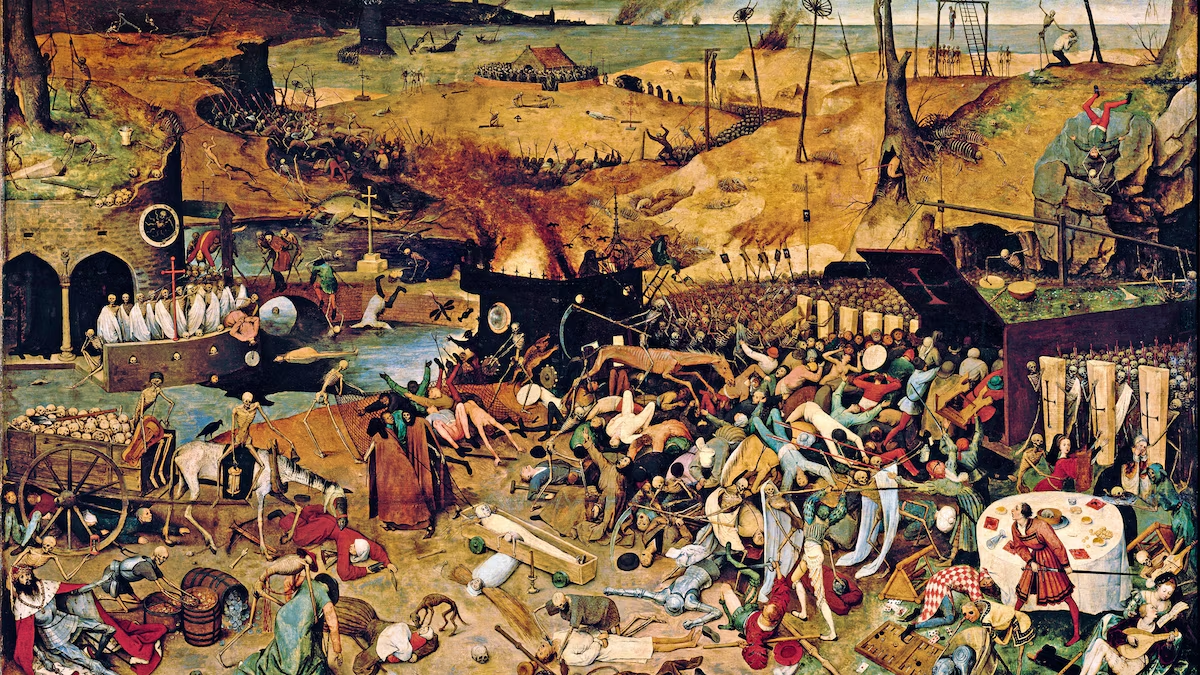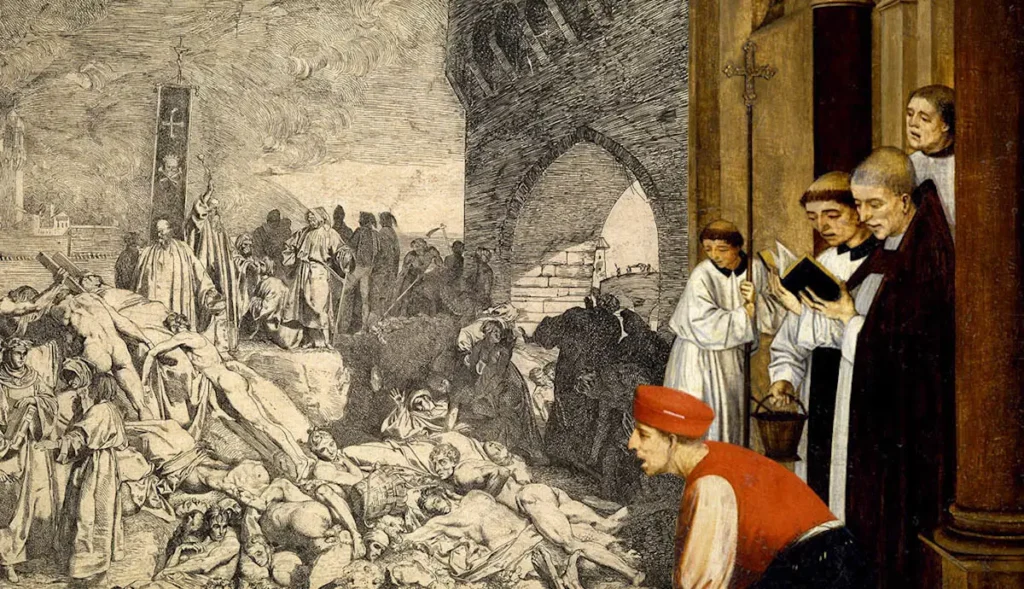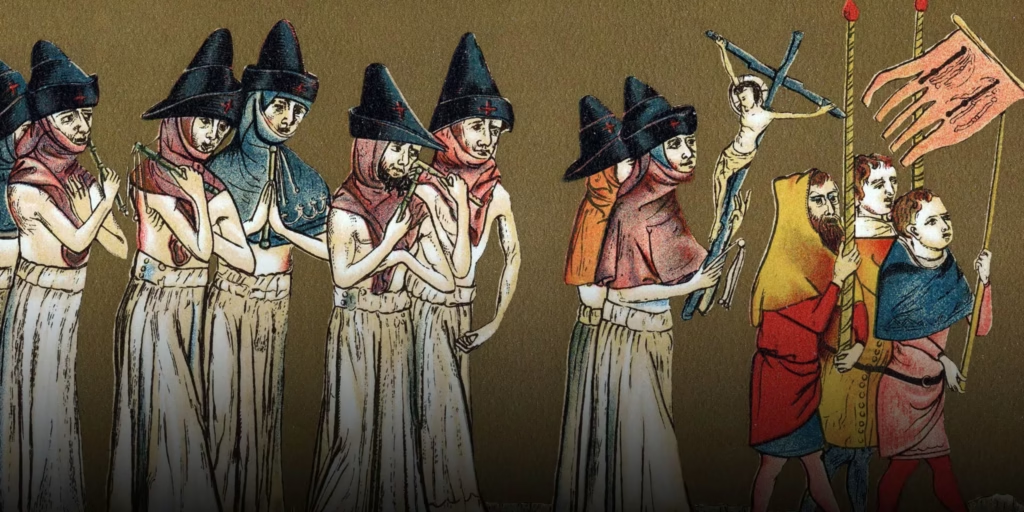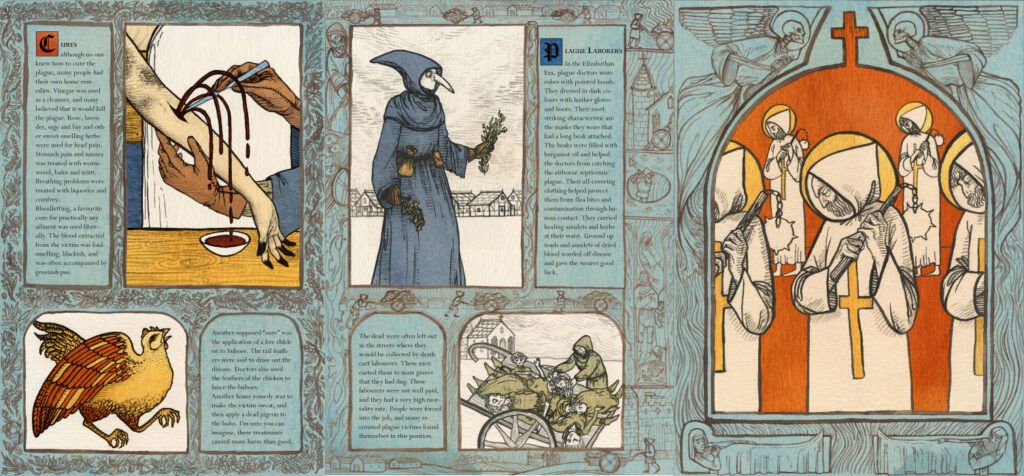“The Black Death: A Timeline of Horror, Collapse, and Transformation”

The Black Death, also known as the Great Plague or the Bubonic Plague, was a catastrophic pandemic that ravaged Europe, Asia, and North Africa between 1347 and 1353. Responsible for the deaths of an estimated 75 to 200 million people, the Black Death is considered one of the deadliest pandemics in human history.
Not merely a health crisis, the Black Death triggered profound changes in demographics, economics, religion, art, medicine, and society—shaping the modern world in its aftermath. This article presents a detailed timeline and overview of the plague’s course and impact, placing it in historical and global context.

⚫ What Was the Black Death?
The Black Death refers to a pandemic outbreak of plague, caused primarily by the bacterium Yersinia pestis, which spreads through:
- Flea bites from infected rats
- Airborne droplets (in the case of pneumonic plague)
- Direct contact with contaminated individuals or corpses
There are three main types of plague:
- Bubonic: Causes swollen lymph nodes (buboes), fever, and death within days
- Pneumonic: Infects the lungs and spreads via coughing
- Septicemic: Infects the blood and is often fatal within 24 hours
📜 Timeline of the Black Death
Circa 1320–1331: Origins in Central Asia
- Most historians trace the plague’s origin to Central Asia, likely around Lake Issyk-Kul in modern-day Kyrgyzstan.
- The plague was possibly endemic among rodents, and outbreaks may have been triggered by climate shifts, ecological disruptions, or increased Silk Road trade.
1346: Siege of Caffa and Biological Warfare
- Mongol armies besieging the Genoese trading city of Caffa (now Feodosia in Crimea) catapulted plague-infected corpses over the walls—possibly one of the earliest known uses of biological warfare.
- Fleeing merchants and sailors carried the plague to ports across the Black Sea and Mediterranean.
1347: Arrival in Europe
- In October 1347, plague-infected ships docked at Messina, Sicily.
- The disease quickly spread to other Mediterranean ports:
- Marseille
- Genoa
- Venice
- Constantinople
The mortality was swift and terrifying—often entire ships arrived with all crew dead or dying.
1348: Rapid Spread Across Europe
- The Black Death exploded across Europe:
- France: Marseille to Paris and the countryside
- Spain: Barcelona, then inland
- England: Bristol in June, then to London by autumn
- Germany and the Low Countries
- Switzerland and Austria
At its peak, the plague may have killed 30–50% of the population in some areas. Cities like Florence, Paris, and London were devastated.
1349: Scandinavia, Ireland, and Further Death
- Reached Norway via English ships; moved inland through Sweden and Denmark.
- In England, mass graves and entire villages were abandoned.
- Ireland was struck by infected ships from England, particularly hitting Dublin and ports on the east coast.
1350–1351: Eastern Europe and Russia
- The plague reached Poland, Hungary, and Russia by 1351.
- Some areas, such as Bohemia, were strangely less affected—possibly due to quarantines, lower population density, or geographic isolation.

1353: Decline and Aftermath
- By 1353, the initial wave of the Black Death had largely subsided.
- But the plague never truly disappeared: it recurred in waves throughout Europe until the 18th century.
- Entire cities and institutions were reshaped by the loss and trauma.
☠️ Death Toll and Social Impact
- Estimated deaths: 75 to 200 million globally
- Europe alone lost approximately 30–60% of its population.
- Urban areas suffered more due to population density and poor sanitation.
Effects on Society:
- Labor shortages gave peasants bargaining power, disrupting feudalism.
- Wages rose, and serfdom began to decline.
- Landownership shifted, and many manorial systems collapsed.
- Massive economic contraction led to inflation, bankruptcies, and famine.
🕯️ Religious and Psychological Reactions
- Many saw the plague as divine punishment for sins.
- Flagellant movements spread: people whipped themselves to atone.
- Others turned to extreme piety, while some abandoned faith altogether.
- Jewish communities were scapegoated, leading to massacres and pogroms, especially in Germany and Spain.
⚕️ Medicine and Misconceptions
At the time, medical understanding was primitive:
- Believed causes: “bad air” (miasma), planetary alignment, divine wrath
- Popular treatments:
- Bloodletting
- Burning aromatic herbs
- Carrying posies (to “ward off the smell”)
- Avoiding bathing (believed to open pores to disease)
Physicians wore plague doctor masks with beaked noses filled with herbs to filter “bad air.”
🎨 Cultural and Artistic Impact
- The Black Death led to a macabre turn in art, known as Danse Macabre (Dance of Death), symbolizing the universality of mortality.
- Literature, such as Boccaccio’s Decameron, written during the plague, reflects the chaos and psychological scars of the time.
- Religious art became more somber, focusing on suffering and judgment.
🧬 Modern Understanding and Legacy
Today, historians and scientists largely agree that:
- The bacterium Yersinia pestis was the primary cause, confirmed by DNA evidence in mass graves.
- Carried by rat fleas, it spread rapidly due to urbanization, trade, poor hygiene, and limited medical knowledge.
- Pneumonic variants allowed airborne transmission, accelerating its spread.
The Black Death profoundly altered:
- Demographics
- Medicine (eventually prompting more scientific study)
- Labor economics
- Church authority
- European worldview, paving the way toward the Renaissance
📅 Recurring Plague Outbreaks (Post-1353)
- The Great Plague of London (1665)
- Plague of Vienna (1679)
- Third Plague Pandemic began in China (1855) and spread globally
Thanks to antibiotics, plague is now treatable, but Yersinia pestis still exists in some wild rodent populations.

Conclusion
The Black Death was not only a medical catastrophe—it was a social and cultural earthquake that reshaped medieval Europe. It exposed the limits of religious authority, transformed labor and class systems, and sowed seeds for modern science, governance, and art.
By tracing its timeline, we gain more than just historical insight—we see how human societies respond to collapse, adapt to crisis, and rebuild in the face of overwhelming loss.




